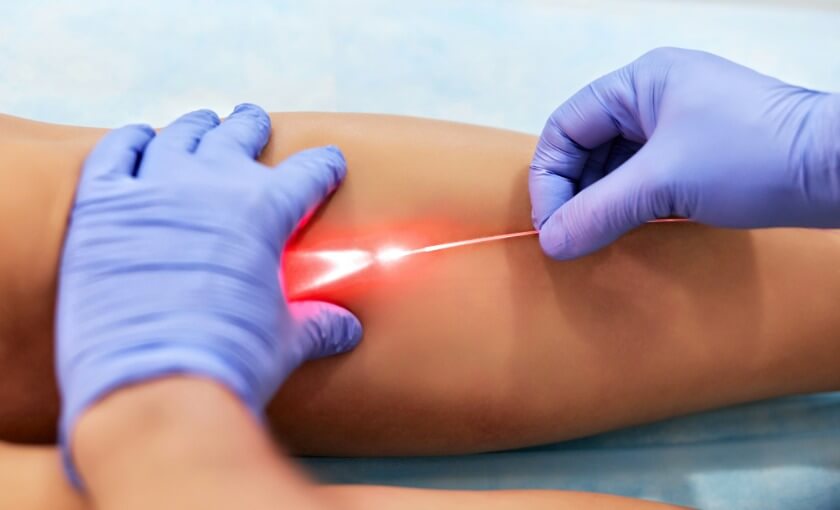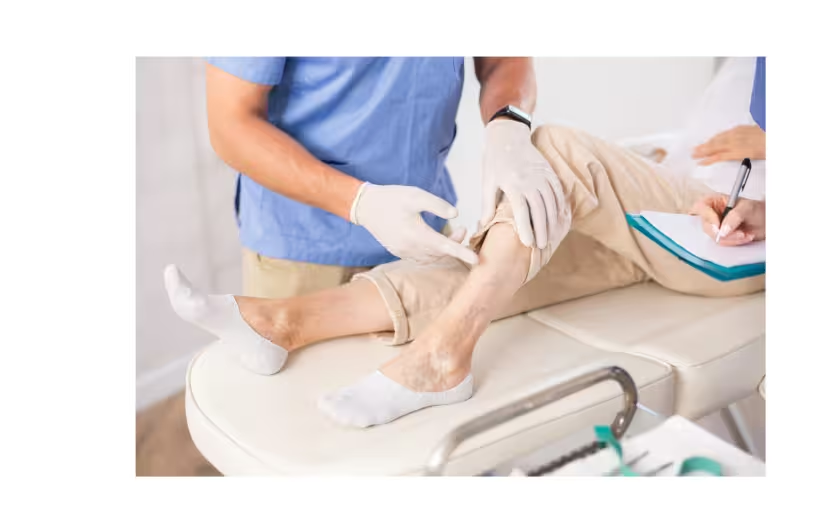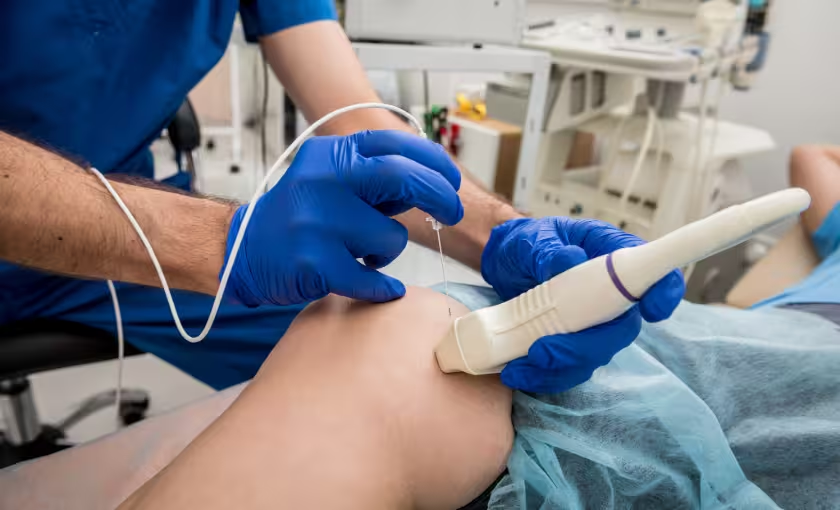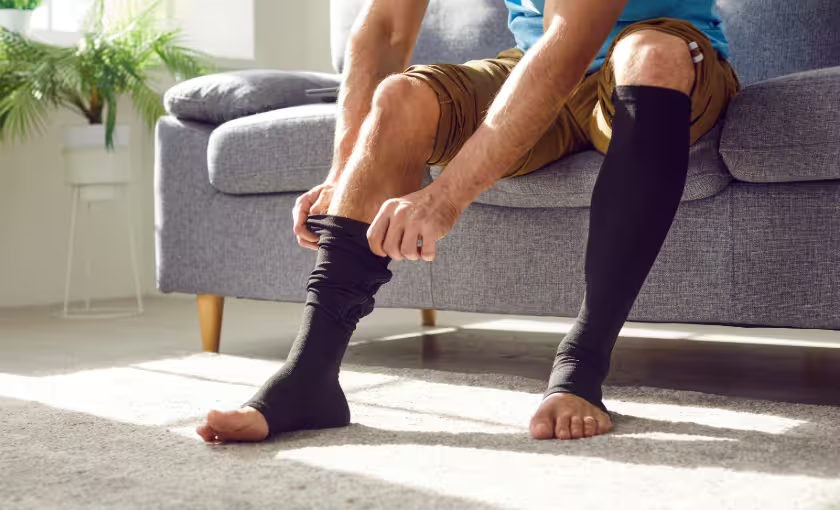Laser Vein Treatment: Precision Light Therapy for Vascular Health

Laser vein treatment represents one of the most sophisticated and precise approaches to treating problematic veins, utilizing the power of focused light energy to achieve targeted vein closure with exceptional accuracy and minimal impact on surrounding tissues. This advanced technology has revolutionized the treatment of both spider veins and larger varicose veins, offering patients a highly effective, minimally invasive option that combines proven results with excellent patient comfort and convenience.
BASS Vein Center's expertise in laser vein treatment encompasses decades of experience with various laser systems and wavelengths, ensuring that patients receive the most appropriate laser therapy for their specific vein problems. The center's commitment to staying at the forefront of laser technology, combined with extensive training in the latest laser techniques and safety protocols, provides patients with access to the most advanced laser treatments available in venous medicine.
Understanding laser vein treatment involves appreciating both the sophisticated physics behind laser technology and the clinical expertise required to achieve optimal results. While the concept of using light energy to treat veins may seem straightforward, the precise application of different laser wavelengths, energy levels, and treatment protocols requires extensive knowledge and experience to master effectively.
The Science and Physics of Laser Vein Treatment
Laser vein treatment utilizes the principle of selective photothermolysis, where specific wavelengths of light are absorbed by target tissues while leaving surrounding structures unaffected. This selective targeting allows for precise treatment of problematic veins while minimizing damage to healthy skin and surrounding tissues, making laser therapy an ideal approach for treating delicate vascular structures.
The mechanism of laser vein closure involves the absorption of laser energy by hemoglobin within the blood vessels, causing rapid heating of the vein wall and subsequent thermal damage that leads to vein closure. The heat generated by the laser energy causes the vein walls to contract and seal, effectively eliminating the problematic vessel while preserving surrounding healthy tissue.
Different laser wavelengths are absorbed preferentially by different tissue components, allowing for customized treatment approaches based on the specific characteristics of the veins being treated. Shorter wavelengths are typically more effective for superficial spider veins, while longer wavelengths can penetrate deeper to treat larger varicose veins and underlying venous insufficiency.
The precision of modern laser systems allows for exact control of energy delivery, pulse duration, and spot size, enabling specialists to customize treatment parameters for each individual patient and vein type. This precision is crucial for achieving optimal outcomes while minimizing the risk of complications and side effects.
Cooling systems integrated into modern laser devices help protect the skin surface while allowing therapeutic energy to reach the target veins. These cooling mechanisms enhance patient comfort during treatment while enabling the use of higher energy levels for more effective vein closure.
Types of Laser Systems and Their Applications
Modern laser vein treatment utilizes several different types of laser systems, each with specific characteristics and applications that make them suitable for different types of veins and treatment situations. Understanding these different systems helps patients and specialists select the most appropriate laser technology for specific treatment needs.
Endovenous laser ablation systems are designed for treating larger varicose veins and underlying venous insufficiency from within the vein itself. These systems use fiber-optic catheters to deliver laser energy directly to the vein wall, causing thermal closure of the problematic vessel. The most commonly used wavelengths for endovenous treatment include 810nm, 940nm, 980nm, and 1470nm lasers, each with specific advantages for different clinical situations.
Surface laser systems are designed for treating spider veins and small varicose veins from outside the skin surface. These systems use various wavelengths including 532nm, 755nm, and 1064nm lasers, each optimized for different vein sizes and depths. The choice of wavelength depends on factors such as vein size, depth, and skin type.
Pulsed dye lasers utilize specific wavelengths that are highly absorbed by hemoglobin, making them particularly effective for treating superficial spider veins and vascular lesions. These systems typically use wavelengths around 585-595nm and are known for their excellent safety profile and effectiveness for appropriate candidates.
Nd:YAG lasers operating at 1064nm wavelength offer deep penetration capabilities that make them effective for treating larger and deeper veins. These systems can be used for both surface treatment and endovenous applications, providing versatility in treating different types of vein problems.
Diode lasers are available in various wavelengths and offer excellent reliability and consistency in energy delivery. These systems are commonly used for both endovenous and surface treatments, with wavelength selection based on the specific clinical application and treatment goals.
Patient Selection and Treatment Planning for Laser Therapy
Successful laser vein treatment outcomes depend heavily on appropriate patient selection and comprehensive treatment planning that considers individual patient factors, vein characteristics, and treatment goals. Understanding these selection criteria and planning considerations is essential for achieving optimal results and patient satisfaction.
Ideal candidates for laser vein treatment include patients with spider veins, reticular veins, and varicose veins who are seeking effective treatment with minimal downtime and excellent cosmetic outcomes. Patients should have realistic expectations about treatment outcomes and be committed to following post-treatment care instructions.
Vein assessment involves detailed evaluation of the size, depth, and characteristics of the problematic veins to determine the most appropriate laser system and treatment parameters. This assessment may include ultrasound imaging to evaluate underlying venous insufficiency and plan comprehensive treatment approaches.
Skin type considerations are important in laser treatment planning, as different skin types may respond differently to various laser wavelengths and energy levels. Patients with darker skin tones may require special considerations and modified treatment protocols to ensure safe and effective outcomes.
Medical history evaluation helps identify any conditions or medications that might affect treatment outcomes or increase the risk of complications. Certain medications, medical conditions, or recent sun exposure may require treatment modifications or delays to ensure optimal safety and effectiveness.
Treatment goals should be clearly defined and discussed with patients to ensure that expectations are realistic and achievable. While laser treatment can achieve excellent results for appropriate candidates, patients should understand that multiple sessions may be required and that some veins may respond better to treatment than others.
The Laser Treatment Experience
Understanding what to expect during laser vein treatment helps patients feel more comfortable and confident about their treatment choice. The experience varies depending on the type of laser system used and the specific veins being treated, but modern laser treatments are designed to be as comfortable and convenient as possible.
Pre-treatment preparation typically involves avoiding sun exposure and certain medications that might increase photosensitivity or bleeding risk. Patients should also avoid applying lotions or cosmetics to the treatment area on the day of the procedure to ensure optimal laser energy delivery.
Surface laser treatments are performed with the patient lying comfortably while the laser handpiece is applied to the skin surface over the problematic veins. Most patients describe the sensation as similar to a rubber band snapping against the skin, with cooling systems helping to minimize discomfort during treatment.
Endovenous laser treatments involve inserting a thin fiber-optic catheter into the problematic vein under ultrasound guidance, similar to other catheter-based procedures. Local anesthesia is used to ensure patient comfort during catheter insertion and laser energy delivery.
Treatment duration varies depending on the number and size of veins being treated, but most sessions take between 15 minutes to an hour. Multiple veins can often be treated during a single session, making the procedure efficient and convenient for busy patients.
Post-treatment care begins immediately after the procedure, with specific instructions provided based on the type of laser treatment performed. This may include applying cooling compresses, avoiding sun exposure, and wearing compression stockings for certain types of treatments.
Advantages of Laser Treatment Over Alternative Approaches
Laser vein treatment offers several distinct advantages over alternative treatment methods, making it an attractive option for many patients seeking effective vein care with minimal disruption to their daily activities.
Precision targeting allows laser energy to be focused specifically on problematic veins while leaving surrounding healthy tissue unaffected. This precision reduces the risk of complications and side effects while maximizing treatment effectiveness for the targeted vessels.
Non-invasive or minimally invasive nature of laser treatments means that most procedures can be performed without incisions or with only tiny puncture sites for catheter insertion. This approach reduces recovery time, minimizes scarring, and allows patients to return to normal activities quickly.
Versatility in treating different types of veins makes laser therapy suitable for a wide range of vein problems, from tiny spider veins to larger varicose veins. Different laser systems and wavelengths can be selected based on the specific characteristics of the veins being treated.
Excellent cosmetic outcomes are achieved through the precise nature of laser energy delivery and the minimal tissue trauma associated with laser treatments. Most patients experience excellent improvement in the appearance of treated veins with minimal visible signs of treatment.
Minimal downtime following laser treatment allows patients to resume normal activities quickly, making it particularly appealing for busy individuals who cannot afford extended recovery periods. Most patients can return to work and normal activities within a day or two of treatment.
Clinical Outcomes and Effectiveness
The clinical evidence supporting laser vein treatment is extensive, with numerous studies demonstrating excellent outcomes for various types of vein problems when appropriate laser systems and techniques are used.
Success rates for laser vein treatment are generally high, with studies showing excellent closure rates for endovenous laser ablation and significant improvement in the appearance of spider veins treated with surface laser systems. Success rates vary depending on the type of laser used, the characteristics of the treated veins, and patient factors.
Long-term durability of laser treatment results has been well-documented, with studies showing that properly treated veins remain closed over time. The thermal damage caused by laser energy creates permanent changes in the vein wall that prevent reopening of treated vessels.
Patient satisfaction with laser vein treatment is consistently high, reflecting both the excellent clinical outcomes and the positive treatment experience that modern laser systems provide. High satisfaction rates indicate that patients are pleased with both their results and the treatment process.
Symptom improvement following laser treatment is typically rapid and significant for patients with symptomatic veins. Many patients experience relief from leg heaviness, aching, and swelling within days of treatment, with continued improvement over the following weeks.
Complication rates for laser vein treatment are generally low when procedures are performed by experienced specialists using appropriate techniques and safety protocols. Minor side effects such as temporary redness or swelling are common but typically resolve quickly.
Safety Considerations and Risk Management
Laser vein treatment is generally very safe when performed by experienced specialists using appropriate laser systems and safety protocols. Understanding the safety aspects of laser treatment helps patients make informed decisions and feel confident about their choice.
Eye safety is a critical consideration in laser treatment, with appropriate protective eyewear required for both patients and staff during all laser procedures. Modern laser systems include safety features and protocols designed to prevent accidental eye exposure to laser energy.
Skin protection measures help prevent thermal injury to the skin surface during laser treatment. These measures may include cooling systems, protective gels, and careful selection of laser parameters based on skin type and characteristics.
Patient selection criteria help ensure that laser treatment is appropriate and safe for individual patients. Certain medical conditions, medications, or skin characteristics may require special precautions or alternative treatment approaches.
Treatment protocols are designed to maximize effectiveness while minimizing the risk of complications. These protocols specify appropriate laser parameters, treatment techniques, and post-treatment care instructions based on extensive clinical experience and research.
Emergency procedures are in place to address any rare complications that might occur during laser treatment. While serious complications are extremely uncommon, having appropriate protocols ensures that patients receive prompt, appropriate care if needed.
Post-Treatment Care and Recovery
Proper post-treatment care is essential for achieving optimal outcomes from laser vein treatment and minimizing the risk of complications. Understanding what to expect during recovery and following appropriate care instructions helps ensure the best possible results.
Immediate post-treatment care varies depending on the type of laser treatment performed but typically includes applying cooling compresses to reduce any discomfort and avoiding sun exposure to prevent pigmentation changes. Specific instructions are provided based on the individual treatment performed.
Activity guidelines following laser treatment generally allow for immediate return to normal daily activities, with some restrictions on strenuous exercise or activities that might increase venous pressure. Walking is typically encouraged as it promotes healthy circulation and supports healing.
Expected side effects may include temporary redness, swelling, or mild discomfort at the treatment sites, all of which are normal parts of the healing process and typically resolve within a few days to weeks. More significant side effects are rare but should be reported if they occur.
Follow-up appointments are scheduled to monitor treatment progress and assess the need for additional sessions. These appointments also provide opportunities to address any concerns and evaluate the effectiveness of the treatment.
Sun protection is particularly important following laser treatment, as treated areas may be more sensitive to sun exposure and at increased risk for pigmentation changes. Patients should use appropriate sun protection and avoid excessive sun exposure for several weeks following treatment.
Long-term care involves maintaining overall vein health and protecting treated areas from factors that might contribute to the development of new vein problems. This includes following lifestyle recommendations and attending regular follow-up appointments as recommended.
Combining Laser Treatment with Other Modalities
Laser vein treatment is often most effective when integrated into comprehensive treatment plans that may include other vein treatment modalities, allowing for optimal outcomes for patients with complex or multiple types of vein problems.
Combination with sclerotherapy can provide comprehensive treatment for patients with both spider veins and small varicose veins, with each modality used for the vein types where it is most effective. This combination approach can achieve optimal cosmetic and functional outcomes.
Integration with catheter-based treatments allows for comprehensive management of venous insufficiency, with endovenous laser ablation used to treat underlying reflux while surface laser treatments address cosmetic concerns. This integrated approach can provide complete solutions for complex vein problems.
Sequential treatment protocols may be recommended for patients with extensive vein problems, allowing for optimal healing between different types of treatments while ensuring that all aspects of the patient's vein problems are addressed systematically.
Treatment timing considerations help optimize outcomes when multiple treatment modalities are used, with careful planning of the sequence and timing of different procedures to achieve the best possible results while minimizing patient discomfort and recovery time.
Cost Considerations and Treatment Value
Understanding the financial aspects of laser vein treatment is important for making informed decisions about care, particularly since different types of laser treatments may have different cost structures and insurance coverage considerations.
Treatment costs for laser vein treatment vary depending on the type of laser system used, the extent of treatment required, and the number of sessions needed to achieve optimal results. Surface laser treatments for spider veins are typically less expensive than endovenous laser procedures for larger varicose veins.
Insurance coverage varies depending on the medical necessity of the treatment and the specific laser procedure performed. Endovenous laser ablation for symptomatic varicose veins is often covered by insurance, while surface laser treatments for cosmetic spider veins may not be covered.
Value proposition of laser treatment includes not only the immediate cosmetic and functional improvements but also the long-term benefits of durable results and minimal downtime. The precision and effectiveness of laser treatment often provide excellent value when all factors are considered.
Cost comparison with alternative treatments should consider both the initial treatment costs and any ongoing maintenance requirements. Laser treatment often provides competitive value when compared to other treatment options, particularly given its proven effectiveness and patient satisfaction rates.
Payment options may be available to help make laser vein treatment accessible for patients who want to benefit from this advanced technology. These options can help patients achieve their treatment goals without financial strain.
Future Developments in Laser Technology
Laser vein treatment continues to evolve with ongoing advances in laser technology, treatment techniques, and understanding of optimal treatment protocols that promise to further improve outcomes and expand treatment options.
New laser wavelengths and systems under development may offer improved effectiveness, reduced side effects, or enhanced patient comfort compared to currently available options. These developments could further improve the already excellent outcomes achieved with current laser technology.
Improved cooling and skin protection systems may enhance patient comfort during treatment while allowing for more aggressive treatment parameters that could improve effectiveness. These advances could make laser treatment even more appealing for patients concerned about discomfort.
Enhanced imaging and guidance systems may improve the precision of laser treatments and help optimize treatment parameters for individual patients and vein characteristics. These developments could further improve outcomes and reduce the variability in treatment results.
Combination device development may integrate laser technology with other treatment modalities in single systems, potentially providing more comprehensive treatment options and improved convenience for both patients and practitioners.
Conclusion: The Precision of Light in Vein Treatment
Laser vein treatment represents a sophisticated, precise, and highly effective approach to treating various types of vein problems, offering patients access to advanced technology that combines proven results with excellent patient experiences. The versatility of laser systems in treating everything from tiny spider veins to larger varicose veins makes laser therapy an essential component of comprehensive vein care.
The precision and selectivity of laser energy delivery, combined with the minimally invasive nature of most laser treatments, provide patients with an attractive option that offers excellent results with minimal disruption to their daily lives. The continued evolution of laser technology promises even better outcomes and expanded treatment options for patients seeking the most advanced vein care available.
BASS Vein Center's extensive experience with various laser systems and wavelengths, combined with ongoing commitment to staying current with the latest laser technology advances, ensures that patients receive the most appropriate and effective laser treatments for their specific needs. The center's expertise in laser vein treatment provides patients with access to the precision and effectiveness that only advanced laser technology can provide.
For individuals seeking precise, effective treatment for their vein problems with minimal downtime and excellent cosmetic outcomes, laser vein treatment represents an outstanding choice that harnesses the power of light to achieve optimal results. The combination of advanced technology, proven effectiveness, and excellent patient experiences makes laser treatment an ideal solution for many patients seeking modern vein care.
Don't let vein problems continue to affect your appearance and confidence when advanced laser technology can provide the precise, effective treatment you need. Contact BASS Vein Center today at (925) 489-1684 to learn more about laser vein treatment options and discover how the precision of light therapy can help you achieve the clear, attractive legs you desire. Your journey toward better vein health with cutting-edge laser technology begins with a consultation with the specialists who have the expertise and advanced equipment to help you achieve optimal results.
Take the First Step to Ending Annoying Varicose Vein Discomfort.






.svg)


